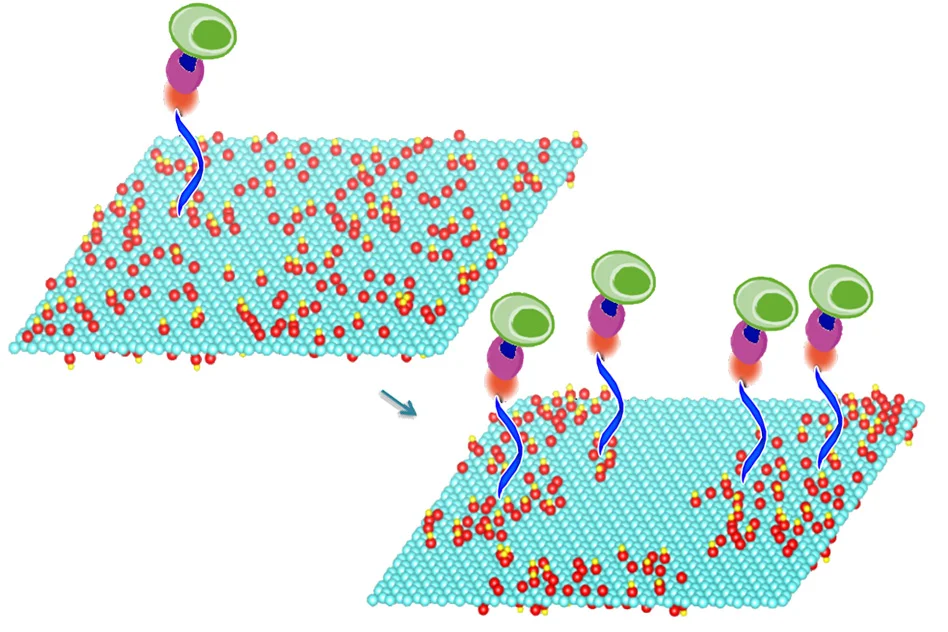Graphene ‘phototransistor’ promising for optical technologies

Researchers have solved a problem hindering development of highly sensitive optical devices made of a material called graphene, an advance that could bring applications from imaging and displays to sensors and high-speed communications.
Graphene is an extremely thin layer of carbon that is promising for optoelectronics, and researchers are trying to develop graphene-based photodetectors, devices that are critical for many technologies. However, typical photodetectors made of graphene have only a small area that is sensitive to light, limiting their performance.
Now, researchers have solved the problem by combining graphene with a comparatively much larger silicon carbide substrate, creating graphene field-effect transistors, or GFETs, which can be activated by light, said Yong Chen, a Purdue University professor of physics and astronomy and electrical and computer engineering, and director of the Purdue Quantum Center.
High-performance photodetectors might be useful for applications including high-speed communications and ultra-sensitive cameras for astrophysics, as well as sensing applications and wearable electronics. Arrays of the graphene-based transistors might bring high-resolution imaging and displays.
“In most cameras you need lots of pixels,” said Igor Jovanovic, a professor of nuclear engineering and radiological sciences at the University of Michigan. “However, our approach could make possible a very sensitive camera where you have relatively few pixels but still have high resolution.”
New findings are detailed in a research paper appearing this week in the journal Nature Nanotechnology. The work was performed by researchers at Purdue, the University of Michigan and Pennsylvania State University. A YouTube video is available at https://youtu.be/wKvoechAq6U.
“In typical graphene-based photodetectors demonstrated so far, the photoresponse only comes from specific locations near graphene over an area much smaller than the device size,” Jovanovic said. “However, for many optoelectronic device applications, it is desirable to obtain photoresponse and positional sensitivity over a much larger area.”
New findings show the device is responsive to light even when the silicon carbide is illuminated at distances far from the graphene. The performance can be increased by as much as 10 times depending on which part of the material is illuminated. The new phototransistor also is “position-sensitive,” meaning it can determine the location from which the light is coming, which is important for imaging applications and for detectors.
“This is the first time anyone has demonstrated the use of a small piece of graphene on a large wafer of silicon carbide to achieve non-local photodetection, so the light doesn’t have to hit the graphene itself,” Chen said. “Here, the light can be incident on a much larger area, almost a millimeter, which has not been done before.”
A voltage is applied between the back side of the silicon carbide and the graphene, setting up an electric field in the silicon carbide. Incoming light generates “photo carriers” in the silicon carbide.
“The semiconductor provides the media that interact with light,” Jovanovic said. “When light comes in, part of the device becomes conducting and that changes the electric field acting on graphene.”
This change in the electric field also changes the conductivity of graphene itself, which is detected. The approach is called field-effect photo detection.
The silicon carbide is “un-doped,” unlike conventional semiconductors in silicon-based transistors. Being un-doped makes the material an insulator unless it is exposed to light, which temporarily causes it to become partially conductive, changing the electric field on the graphene.
“This is a novelty of this work,” Chen said.
The research is related to work to develop new graphene-based sensors designed to detect radiation and was funded with a joint grant from the National Science Foundation and the U.S. Department of Homeland Security and another grant from the Defense Threat Reduction Agency.
“This particular paper is about a sensor to detect photons, but the principles are the same for other types of radiation,” Chen said. “We are using the sensitive graphene transistor to detect the changed electric field caused by photons, light in this case, interacting with a silicon carbide substrate.”
Light detectors can be used in devices called scintillators, which are used to detect radiation. Ionizing radiation creates brief flashes of light, which in scintillators are detected by devices called photo multiplier tubes, a roughly century-old technology.
“So there is a lot of interest in developing advanced semiconductor-based devices that can achieve the same function,” Jovanovic said.
Image: A graphene field-effect transistor, or GFET, developed at Purdue University could bring high-performance photodetectors for various potential applications. (Purdue University image/Erin Easterling)





